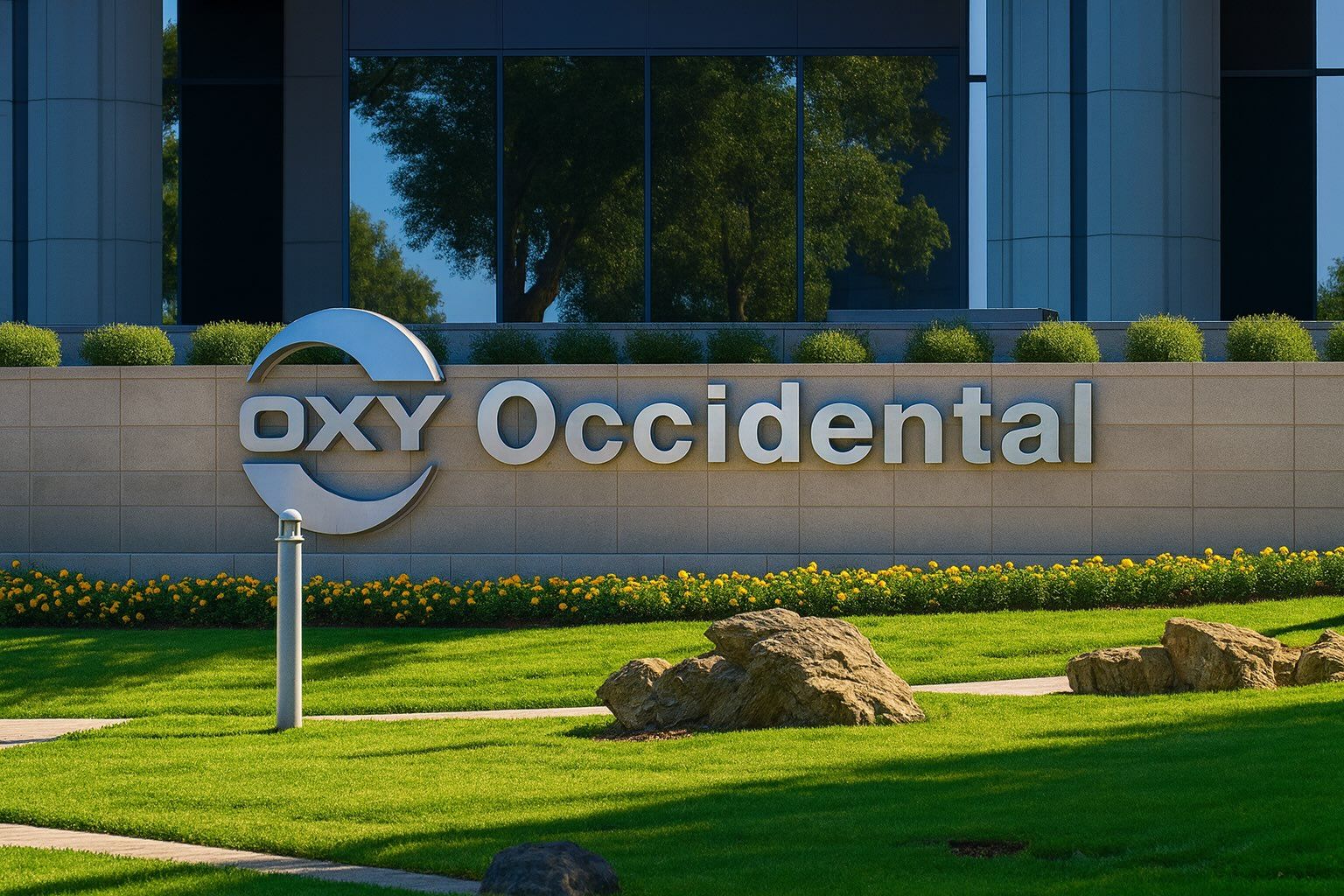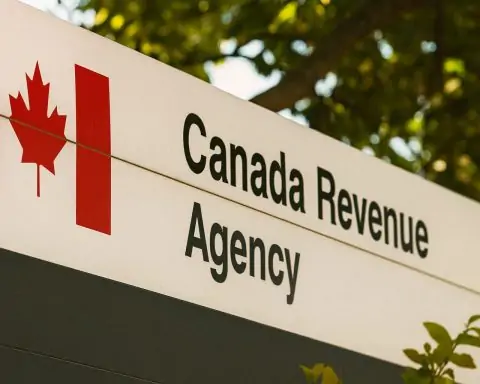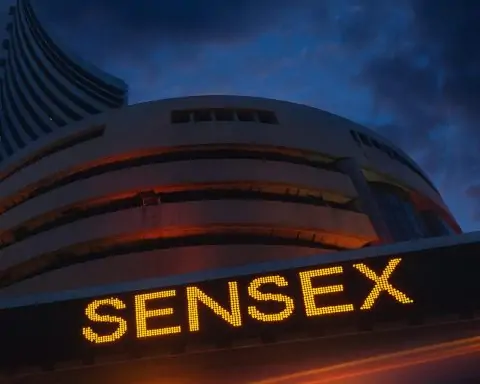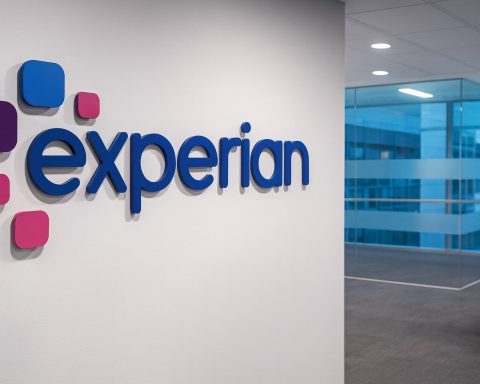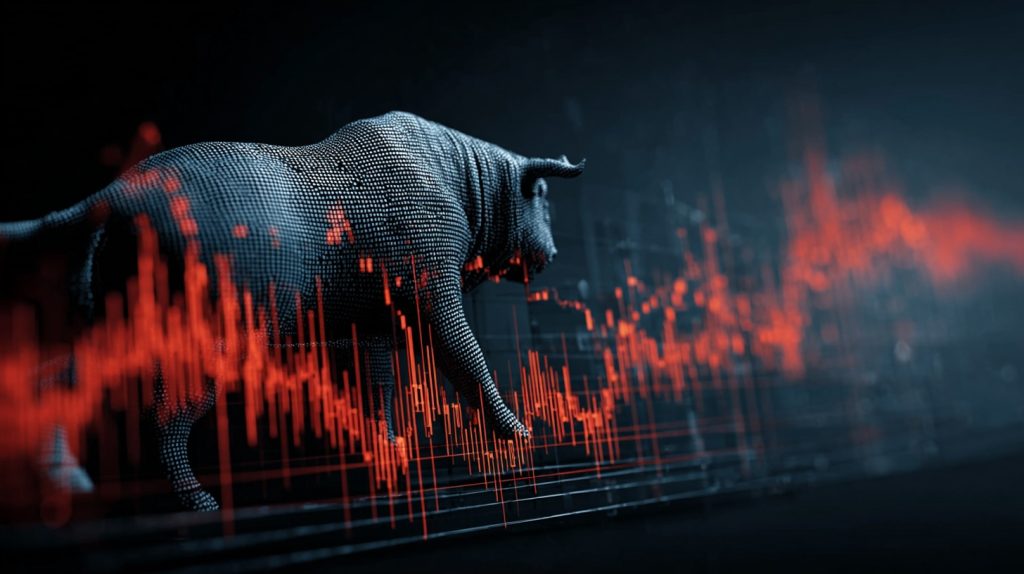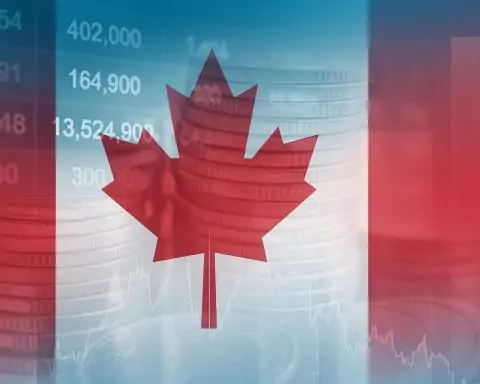- Stock price around report date: Occidental Petroleum’s (OXY) stock closed at ≈US$47.72 per share on 1 Oct 2025, the last trading day before the report. Closing prices earlier in the week ranged from US$47.25 to US$48.10, indicating modest volatility [1]. MarketBeat lists the stock at US$47.75 on 1 Oct 2025 [2].
- Recent performance: The stock fell slightly during the week of 29 Sept 2025; closing prices declined from US$48.10 on 29 Sept to US$47.72 on 1 Oct [3] (≈−0.8 %). Over the past month, OXY traded between the mid‑40s and upper‑40s; the 52‑week range was US$34.78–56.49 [4].
- Major news: On 2 Oct 2025, Occidental announced a US$9.7 billion all‑cash sale of its OxyChem petrochemical division to Berkshire Hathaway. The deal is expected to close in Q4 2025 and will cut OXY’s debt; the company plans to use US$6.5 billion of the proceeds to reduce debt to below US$15 billion [5] [6]. This is Berkshire’s largest acquisition since Alleghany in 2022.
- Quarterly results: In Q2 2025, Occidental beat Wall Street estimates, reporting US$0.39 adjusted earnings per share (vs analyst consensus of US$0.29). Production rose 11 % to 1.4 million barrels of oil equivalent per day (MMboe/d). The company announced US$950 million in divestitures since the quarter’s start and had repaid US$3 billion of debt year‑to‑date [7].
- Management update: On 2 Oct 2025, Oxy promoted Richard A. Jackson to Senior Vice President & Chief Operating Officer. He will oversee global oil & gas operations, low‑carbon technologies and midstream/marketing. CEO Vicki Hollub praised his record in growing U.S. onshore production and launching low‑carbon technologies [8].
- Analyst consensus: MarketBeat’s compilation of 22 analysts shows a “Hold” consensus with one sell, 17 hold and four buy ratings and an average price target of US$54.32, implying ~13.8 % upside from the current price [9]. Several banks adjusted targets during summer 2025: Mizuho lowered its target to US$58 (Neutral) on 15 Sept; UBS raised to US$46 (Neutral); Morgan Stanley cut from overweight to equal weight with a US$52 target on 18 Aug; Piper Sandler raised to US$50 on 17 July; JPMorgan and Wells Fargo tweaked targets in July. The high target is US$75 and the low US$44 [10].
- Energy market context: Crude prices dropped to four‑month lows at the start of October amid oversupply concerns. Brent fell to ≈US$65.35 per barrel and U.S. West Texas Intermediate (WTI) to ≈US$61.78 after worries that a U.S. government shutdown and an OPEC+ production hike could create a glut [11]. Earlier Reuters coverage noted similar levels and predicted oversupply; analysts at Macquarie warned of a “super glut” while UBS said Russian disruptions had yet to materially affect prices [12].
- Peer comparison: Exxon Mobil (XOM) and Chevron (CVX) remain significantly larger. XOM’s market capitalization (~US$445 bn) and Chevron’s (~US$305 bn) dwarf Oxy’s (~US$45 bn). Both peers also maintain stronger balance sheets; Exxon generated >US$23 bn free cash flow in H1 2025 and has a smaller leverage ratio, whereas Oxy has been deleveraging. The sale of OxyChem aims to put Oxy’s net debt below US$15 bn and improve its leverage ratio.
- ESG and controversies: Oxy faces scrutiny over carbon emissions and climate risk due to its oil & gas focus; however, the company operates Oxy Low Carbon Ventures, working on carbon capture and direct‑air‑capture projects. It continues to invest in these technologies and has promoted its leader Richard Jackson to COO [13]. There are no major new environmental controversies reported during the week of 2 Oct 2025.
Stock Performance and Market Trends
Current stock price and recent trend
Occidental’s stock closed at ≈US$47.72 on 1 Oct 2025, slightly down from US$48.10 at the start of the week (29 Sept) [14]. Within this period, daily volume ranged between roughly six and eight million shares, showing moderate trading interest [15].
Over the past month, OXY has traded in the mid‑40s to upper‑40s, reflecting volatility driven by oil price swings and speculation about the OxyChem sale. For context, the stock’s 52‑week high is US$56.49 and the low US$34.78 [16]. The one‑month performance is essentially flat to modestly negative as the market digested the prospective divestiture and weaker oil prices.
Technical snapshot vs peers
Oxy trails larger peers. While OXY traded around US$47–48, Exxon Mobil hovered near US$106 and Chevron near US$156 (approximate October 2025 levels). Oxy’s price‑to‑earnings ratio (~15× forward earnings) is lower than Exxon’s (~20×) but higher than Chevron’s (~12×), reflecting differing growth prospects. Dividend yield (~1.7 %) is smaller than Exxon (~3.3 %) and Chevron (~4.0 %), because Oxy prioritizes deleveraging over large dividends.
Notable News and Developments
Berkshire Hathaway buys OxyChem
On 2 Oct 2025, Occidental and Berkshire Hathaway announced an agreement for Berkshire to acquire Occidental’s chemical subsidiary OxyChem for US$9.7 billion in cash. Oxy plans to use US$6.5 billion to reduce debt and aims to bring principal debt below US$15 billion [17] [18]. OxyChem manufactures chlorine, caustic soda and vinyl products used in swimming pool treatment and plastics. Berkshire Vice‑Chair Greg Abel praised OxyChem’s portfolio and said the transaction would reinforce the company’s balance sheet [19]. This sale is Berkshire’s largest since its US$11.6 billion purchase of Alleghany in 2022, reflecting Berkshire CEO Warren Buffett’s long‑standing interest in Oxy. Berkshire already holds about 28 % of Oxy’s common stock and preferred stock, giving it significant influence.
CEO Vicki Hollub described the sale as part of a “deleveraging and portfolio optimization” strategy that unlocks a “20‑plus year low‑cost resource runway.” She emphasised that Oxy will focus on upstream operations and low‑carbon technologies, while redeploying capital to repay debt [20]. Analysts noted that OxyChem generated US$2.42 billion in revenue in the first half of 2025 [21] and that the sale multiple (~8× 2025 EBITDA) is attractive but will remove a steady cash flow stream. JPMorgan analyst Arun Jayaram called the move a “big bang” deleveraging action; he estimated it would reduce Oxy’s leverage ratio to 0.7–0.9× but cautioned that the company would forego roughly US$460 million in free‑cash‑flow benefits from a Battleground expansion expected in 2026 [22].
Earnings update (Q2 2025)
Occidental’s second‑quarter results, released on 6 Aug 2025, exceeded expectations. The company reported adjusted earnings of US$0.39 per share vs consensus of US$0.29, benefitting from 11 % higher production at 1.4 MMboe/d and cost reductions. Realized natural gas prices more than doubled to US$1.33 per thousand cubic feet (Mcf), but realized oil prices fell 20 % to US$63.76 per barrel due to market weakness [23]. Oxy announced US$950 million in additional divestitures since the quarter began and had repaid US$3 billion of debt year‑to‑date [24]. Capital expenditure was cut by US$100 million, and international operating costs fell US$50 million. These actions demonstrate management’s focus on cost discipline and deleveraging.
Debt reduction and asset sales
Beyond the OxyChem transaction, Occidental has been actively selling non‑core assets. In August 2025, the company disclosed that it had completed four divestitures since April, generating US$950 million. Oxy sold non‑core Permian Basin assets and agreed to sell certain gas gathering assets in the Midland Basin to an affiliate of Enterprise Products Partners for US$580 million. Since announcing the CrownRock acquisition in December 2023, total divestitures reached US$4 billion. Oxy also highlighted that it had repaid US$7.5 billion in debt since July 2024 [25].
Management changes and low‑carbon focus
The 2 Oct 2025 promotion of Richard A. Jackson to Senior Vice President & COO positions him to oversee global upstream operations, the Oxy Low Carbon Ventures business and health, safety & environment functions. Board Chair Jack Moore highlighted Jackson’s success in growing onshore operations and launching the company’s low‑carbon technologies. CEO Vicki Hollub praised his leadership in advancing Oxy’s low‑cost resources and technology initiatives [26]. Jackson had previously led the Low Carbon Ventures division and Permian operations and served as head of investor relations.
Energy market context and geopolitical factors
Crude oil prices were under pressure in late September and early October. Brent crude fell to ~US$65.35 per barrel and WTI to ~US$61.78 on 1 Oct 2025 after traders worried that a U.S. government shutdown and a potential OPEC+ production increase of up to 500,000 barrels per day would create a glut [27]. Reuters earlier noted similar price levels and said Macquarie analysts expected a “super glut” and predicted that OPEC+ could add supply, while UBS commented that disruptions to Russian oil supply had not yet significantly lifted prices [28].
The G7 indicated plans to target buyers of Russian oil, and the U.S. offered intelligence to Ukraine to hit Russian energy infrastructure. Meanwhile, China increased stockpiling, and U.S. crude inventories rose, contributing to oversupply concerns [29]. Such macro factors affect all oil producers, including Oxy; lower oil prices reduce cash flows but boost the case for asset sales and cost discipline.
Analyst Commentary and Ratings
MarketBeat compiles 22 analysts’ opinions on OXY. The consensus is “Hold” with an average price target of US$54.32, representing roughly 13.8 % upside vs the 1 Oct 2025 price of US$47.75 [30]. The high target is US$75 and the low US$44. Detailed rating actions in 2025 include:
- Sept 15:Mizuho lowered its target to US$58 and maintained a Neutral rating; UBS raised its target to US$46 while keeping Neutral [31].
- Aug 20:Melius Research initiated coverage with a Hold rating and a US$64 target [32].
- Aug 18:Morgan Stanley cut Oxy from Overweight to Equal Weight, setting a US$52 target [33]. Analysts cited the need to deleverage and limited upside given flat production growth.
- Jul 17:Piper Sandler raised its target to US$50 but kept a Neutral stance [34].
- Jul 15:JPMorgan slightly increased its target (details not visible but likely mid‑50s) and remained overweight; Wells Fargo adjusted to a neutral stance with a target near US$55 [35].
- Jul 11:Scotiabank lowered to Equal Weight with a US$46 target [36].
- May 19:Citigroup raised its target to US$45 and maintained a neutral rating [37].
- Apr 22:Susquehanna cut its target to US$55 while maintaining a positive outlook, citing production growth but cautioning about capital discipline [38].
Notable commentary around the OxyChem sale came from JPMorgan’s Arun Jayaram, who said the potential sale (before it was announced) would be a “big bang” deleveraging move. He estimated that disposing of the chemical business would reduce Oxy’s leverage ratio to 0.7–0.9× but acknowledged that Oxy would sacrifice about US$460 million in free‑cash‑flow benefits from the planned Battleground expansion [39]. Analysts overall see the deal as positive for balance sheet strength but caution that the company will lose a steady cash‑generating asset and become more exposed to cyclical oil prices.
Comparison to Peers (ExxonMobil and Chevron)
| Metric (approx Oct 2025) | Occidental Petroleum | Exxon Mobil | Chevron |
|---|---|---|---|
| Market capitalization | ~US$45 bn | ~US$445 bn | ~US$305 bn |
| Production (H1 2025) | ~1.4 MMboe/d [40] | ~3.9 MMboe/d (global) | ~3.0 MMboe/d |
| Leverage ratio | High but falling (goal: <1×); debt targeted to <US$15 bn [41] | Low; strong balance sheet | Moderate; debt ratio ~1.2× |
| Dividend yield | ~1.7 % | ~3.3 % | ~4.0 % |
| Low‑carbon initiatives | Oxy Low Carbon Ventures; direct‑air‑capture projects; carbon capture hubs | Exxon’s Low Carbon Solutions invests billions in CCS, hydrogen and ammonia; targeted 2030 emissions reductions | Chevron invests in renewable fuels and carbon capture, focusing on CCS projects in Permian and California |
| Recent notable moves | Sale of OxyChem to Berkshire; focusing on upstream and carbon capture | Acquisition of Denbury (closed 2024); major share buybacks; large Guyana production growth | Purchase of Hess (announced Oct 2024), boosting Guyana exposure; cost cuts |
Exxon and Chevron have diversified global portfolios and stronger cash generation. Occidental’s sale of OxyChem brings its operations closer to a pure‑play E&P producer with a significant carbon capture business. However, investors must consider its smaller scale and the volatility of U.S. shale production.
Broader Energy Market Trends and Geopolitics
The first days of October 2025 were marked by weaker oil prices due to oversupply fears. News of a potential U.S. government shutdown and speculation that OPEC+ might increase production by up to 500,000 barrels per day weighed on prices. Analysts at Macquarie warned of a “super glut,” while UBS noted that disruptions to Russian oil exports had not yet significantly supported prices [42]. High U.S. crude and product inventories, along with China’s stockpiling, added to the bearish sentiment [43].
Geopolitically, the G7 signaled plans to tighten enforcement of the Russian oil price cap and sanction buyers of Russian oil. The U.S. offered Ukraine intelligence to strike Russian energy infrastructure, heightening tensions [44]. These actions may lead to supply disruptions or retaliatory measures affecting global oil flows.
In this environment, Oxy’s decision to divest OxyChem and focus on upstream and low‑carbon businesses reflects a bet that streamlined operations and a stronger balance sheet will position the company to withstand commodity cycles and capture value from carbon capture technologies.
ESG and Controversies
Occidental faces typical oil‑and‑gas ESG challenges—greenhouse gas emissions, potential spills and indigenous rights. Activist investors have pushed major U.S. producers to reduce carbon footprints and disclose transition plans. Oxy has responded by investing in direct‑air‑capture (DAC) and carbon capture, utilization and sequestration (CCUS) projects through its Oxy Low Carbon Ventures. The promotion of Richard Jackson to COO, who previously led the low‑carbon division, underscores management’s commitment to integrating decarbonization with core operations [45]. The company supports the U.S. Department of Energy’s carbon removal programs and is developing the Stratos DAC facility in Texas. There were no major new controversies reported around Oct 2 2025.
Forecasts and Outlook
Analysts see the OxyChem sale as transformative but caution that the stock’s upside may be limited by weak commodity prices and the loss of chemical cash flows. The consensus price target of US$54.32 implies modest upside (~13.8 %) [46]. Bullish forecasts (>US$60) assume higher oil prices and success in carbon capture projects, while bearish cases (<US$45) reflect concerns about shale declines, capital demands and macro headwinds.
Oxy’s near‑term earnings will depend on commodity prices, production growth from the CrownRock integration and cost management. With debt set to drop below US$15 billion, the company could resume share buybacks or increase dividends by late 2026. Longer‑term, the value of Oxy’s low‑carbon initiatives could become significant if carbon capture projects scale and generate credits.
Conclusion
As of 2 Oct 2025, Occidental Petroleum stands at a crossroads. The sale of OxyChem to Berkshire accelerates deleveraging and transforms Oxy into a more focused exploration & production company with a nascent low‑carbon portfolio. Share performance has been stagnant amid weak oil prices and investor caution. Analysts see limited upside but acknowledge that Oxy’s streamlined portfolio and carbon capture assets could pay off in a higher‑price environment. For investors, Oxy offers exposure to U.S. shale and emerging carbon capture technologies, but it comes with the volatility typical of smaller integrated producers and the risks of a commodity downturn.
In summary, the report explains how Occidental Petroleum’s stock hovered around $47.72 per share in early October 2025, showing little change over the previous week and month. Analysts see the recently announced $9.7 billion sale of OxyChem to Berkshire Hathaway as a strategic deleveraging move that will cut debt below $15 billion [47] [48]. While the transaction strengthens the balance sheet, it also removes a dependable cash-flow source and leaves the company more exposed to cyclical oil prices.
I note that quarterly earnings beat expectations, thanks to 11% higher production and cost reductions [49]. However, weak oil prices, driven by oversupply concerns and geopolitical uncertainty, continue to weigh on the stock [50]. The consensus analyst rating remains a “Hold,” with an average target price of $54.32 and predictions of only modest upside [51]. Compared with larger peers ExxonMobil and Chevron, OXY has a smaller market cap, lower dividend yield, and higher leverage, though its carbon capture initiatives offer long-term potential [52].
References
1. occidentalpetroleum.gcs-web.com, 2. www.marketbeat.com, 3. occidentalpetroleum.gcs-web.com, 4. www.benzinga.com, 5. www.reuters.com, 6. www.businesswire.com, 7. www.reuters.com, 8. www.globenewswire.com, 9. www.marketbeat.com, 10. www.marketbeat.com, 11. www.reuters.com, 12. www.reuters.com, 13. www.globenewswire.com, 14. occidentalpetroleum.gcs-web.com, 15. occidentalpetroleum.gcs-web.com, 16. www.benzinga.com, 17. www.businesswire.com, 18. www.reuters.com, 19. www.businesswire.com, 20. www.businesswire.com, 21. www.reuters.com, 22. www.benzinga.com, 23. www.reuters.com, 24. www.reuters.com, 25. www.globenewswire.com, 26. www.globenewswire.com, 27. www.reuters.com, 28. www.reuters.com, 29. www.reuters.com, 30. www.marketbeat.com, 31. www.marketbeat.com, 32. www.marketbeat.com, 33. www.marketbeat.com, 34. www.marketbeat.com, 35. www.marketbeat.com, 36. www.marketbeat.com, 37. www.marketbeat.com, 38. www.marketbeat.com, 39. www.benzinga.com, 40. www.reuters.com, 41. www.businesswire.com, 42. www.reuters.com, 43. www.reuters.com, 44. www.reuters.com, 45. www.globenewswire.com, 46. www.marketbeat.com, 47. www.businesswire.com, 48. www.reuters.com, 49. www.reuters.com, 50. www.reuters.com, 51. www.marketbeat.com, 52. www.globenewswire.com
